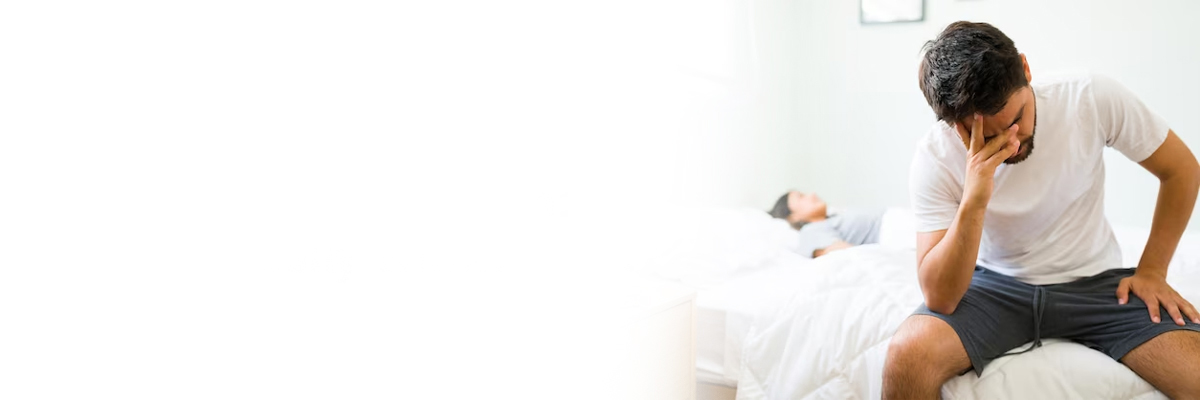
 Dr. Navkaran Singh Sandhu
Dr. Navkaran Singh Sandhu
Ayurvedic treatments for erectile dysfunction: Do they really work?
With a focus on balancing the mind, body, and spirit, ayurveda offers a holistic approach to promote overall well-being. But in the midst of its popularity, a critical question arises: can ayurvedic treatments genuinely address health issues like erectile dysfunction? Let's dig into the ayurvedic secrets and find out if these natural remedies can really do the job.
The ayurvedic approach to erectile dysfunction
Ayurveda, a traditional medicine system that has its roots in India for more than 5,000 years, gets its name from the Sanskrit words "ayur," signifying life, and "veda," meaning knowledge or science. Essentially, ayurveda can be understood as "the science of life."
Ayurveda's approach to treating erectile dysfunction involves a mix of holistic practices aimed at restoring balance to the mind and body. These include herbal remedies, like specific herbs known for their aphrodisiac and rejuvenating properties, and lifestyle and dietary recommendations, like managing stress through yoga and meditation while consuming foods that are believed to increase your libido and improve your sexual health.
Herbal remedies to treat erectile dysfunction
Let’s take a look at some popular ayurvedic herbs that are often used in the treatment of ED:
- Ashwagandha
Ashwagandha, a commonly used herb in Ayurvedic medicine, is said to have "adaptogenic" qualities, which means it helps your body in coping with and handling stress. And while research isn’t conclusive, some findings show that it can be beneficial for a range of neurological disorders.
So when it comes to dealing with issues like erectile dysfunction (ED), which can often be linked to stress and anxiety, ashwagandha may be helpful. [1]
- Safed Musli
Safed musli, recognized for its aphrodisiac qualities in Ayurveda, is valued for its potential in treating sexual health issues, including ED. It is thought to boost sex drive, increase sperm count, and tackle concerns related to sexual performance.
Research shows that it improves quantity and quality of semen in men, as well as a small increase in testosterone levels. [2]
- Shilajit
Shilajit, a mineral-rich herb found in the Himalayas, is esteemed for its rejuvenating properties in ayurveda. In the context of ED, shilajit is thought to improve energy, overall stamina and improve blood flow to the penis, though research to back this up is thin. Some research has suggested it can decrease fatigue and loss of strength after fatiguing tasks. [3]
- Gokshura
Gokshura is a herb recognized in ayurveda for its diuretic and libido-increasing characteristics. Gokshura is known to stimulate the production of nitric oxide, a chemical that relaxes blood vessels and promotes better blood circulation.This better blood circulation could be beneficial for people experiencing ED. [4]
- Kaunch beej
Kaunch beej, derived from mucuna pruriens, is an ayurvedic herb known for its neuroprotective (which means it helps protect your central nervous system) and aphrodisiac qualities. It is believed to increase dopamine levels, which may improve mood and sexual function. [5]
Ayurvedic medicines like Himalaya confido contain a mix of these ingredients which can help increase blood flow to the penis and relax you.
Dietary recommendations in ayurvedic treatment for ED
Dietary recommendations play an important role in promoting overall well-being and addressing specific issues related to sexual health. Here are some common dietary guidelines often suggested in ayurveda:
Incorporate aphrodisiac foods
Ayurveda recommends including aphrodisiac foods in your diet to enhance sexual health. These can include almonds, saffron, dates, and certain fruits like bananas and avocados, thought to have beneficial effects on reproductive vitality.
Balanced diet based on dosha
Ayurveda recognizes that every person has different needs and often tailors dietary advice based on one's dosha (Vata, Pitta, or Kapha). A balanced diet that aligns with your dosha is believed to contribute to overall health, including sexual well-being.
Include spices
Ayurvedic cooking encourages using spices like ginger, garlic, and saffron because they are believed to boost blood circulation and overall vitality.
Overall moderation
Ayurvedic health practitioners recommend moderation in diet and lifestyle. They believe that overindulgence of certain foods may disrupt the balance in the body, potentially affecting sexual well-being.
Lifestyle modifications to treat erectile dysfunction
Ayurvedic treatments which focus on balancing your body and mind, suggest things like yoga, meditation, and breathing exercises to help treat ED.
- Yoga
Yoga, in particular, helps reduce stress and anxiety, enhancing overall well-being and reproductive health. Studies even suggest that practicing yoga from a young age can have long-term benefits for reproductive health. [6]
- Meditation
Taking time to practise mindfulness meditation can be beneficial. It's about being in the present moment without judgement, and it can help reduce stress and anxiety – common factors that cause ED.
- Breathing exercises:
In yoga, there are specific controlled breathing exercises called pranayama. These exercises can help manage stress, fatigue and anxiety, which may be good for your sexual health. [7]
Exploring the latest treatment for erectile dysfunction
Ayurvedic treatments for ED usually take a long time to work and may not have lasting effects. Latest treatments for erectile dysfunction (ED) include PDE5 inhibitors like sildenafil (viagra), tadalafil, and vardenafil which go through rigorous scientific testing, clinical trials, and regulatory approval, giving well-documented evidence of their effectiveness.
So how do these drugs work? When you're looking to have a romantic moment, your body needs to increase blood flow to the penis to make things work. But there's this enzyme called PDE5 that tries to slow things down by reducing that blood flow.
PDE5 inhibitors like viagra, manforce, and suhagra block the production of PDE5, allowing more blood to flow and stay where it's needed.[8] So, these inhibitors make it easier for your body to get things going when you're in the mood for some intimacy. They have also proven to provide rapid relief (usually within an hour or less) making them more convenient to use than ayurvedic treatments.
Research and evidence of ayurvedic treatments
Ayurvedic treatments have recently become a subject of interest and research, but we should know that not all of these practices have strong scientific proof. It's like trying things out and seeing what works for you because everyone might react differently. So, when considering ayurvedic treatments, it's good to be careful and not believe everything without checking if it's backed by good research. Always talk to experts and listen to your body.
__________________________
References:
[1] Mikulska, P., Malinowska, M., Ignacyk, M., Szustowski, P., Nowak, J., Pesta, K., Szeląg, M., Szklanny, D., Judasz, E., Kaczmarek, G., Ejiohuo, O.P., Paczkowska-Walendowska, M., Gościniak, A. and Cielecka-Piontek, J. (2023). Ashwagandha (Withania somnifera)—Current Research on the Health-Promoting Activities: A Narrative Review. Pharmaceutics, [online] 15(4), p.1057. Available at: https://www.ncbi.nlm.nih.gov/pmc/articles/PMC10147008/.
[2] Rath, S. and Panja, A. (2013). Clinical evaluation of root tubers of Shweta Musali (Chlorophytum borivilianum L.) and its effect on semen and testosterone. AYU (An International Quarterly Journal of Research in Ayurveda), 34(3), p.273. doi:https://doi.org/10.4103/0974-8520.123118.
[3] Keller, J.L., Housh, T.J., Hill, E.C., Smith, C.M., Schmidt, R.J. and Johnson, G.O. (2019). The effects of Shilajit supplementation on fatigue-induced decreases in muscular strength and serum hydroxyproline levels. Journal of the International Society of Sports Nutrition, 16(1). doi:https://doi.org/10.1186/s12970-019-0270-2.
[4] Chhatre, S., Nesari, T., Kanchan, D., Somani, G. and Sathaye, S. (2014). Phytopharmacological overview of Tribulus terrestris. Pharmacognosy Reviews, [online] 8(15), p.45. doi:https://doi.org/10.4103/0973-7847.125530.
[5] Lampariello, L.R., Cortelazzo, A., Guerranti, R., Sticozzi, C. and Valacchi, G. (2012). The Magic Velvet Bean of Mucuna pruriens. Journal of Traditional and Complementary Medicine, [online] 2(4), pp.331–339. Available at: https://www.ncbi.nlm.nih.gov/pmc/articles/PMC3942911/.
[6] Sengupta P, Chaudhuri P, Bhattacharya K. Male reproductive health and yoga. Int J Yoga. 2013 Jul;6(2):87-95. doi: 10.4103/0973-6131.113391. PMID: 23930026; PMCID: PMC3734644.
https://www.ncbi.nlm.nih.gov/pmc/articles/PMC3734644/
[7] Jayawardena, R., Ranasinghe, P., Ranawaka, H., Gamage, N., Dissanayake, D. and Misra, A. (2020). Exploring the therapeutic benefits of ‘Pranayama’ (yogic breathing): A systematic review. International Journal of Yoga, [online] 13(2), p.99. doi:https://doi.org/10.4103/ijoy.ijoy_37_19.
[8] Dhaliwal, A. and Gupta, M. (2020). PDE5 Inhibitor. [online] PubMed. Available at: https://www.ncbi.nlm.nih.gov/books/NBK549843/.

Dr. Navkaran Singh Sandhu
Dr. Navkaran Singh Sandhu, MBBS and Clinical Lead - Treated India. He has done MBBS, Cardiology, General Medicine. He comes with clinical experience in top multispecialty hospitals like Fortis and Max. He has firsthand experience in diagnosing critical cardiac care patients and managing medicine OPDs at Post Graduate Institute of Medical Education & Research, Chandigarh.


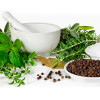
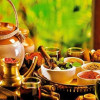

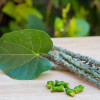
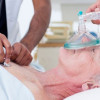

Please login to comment on this article